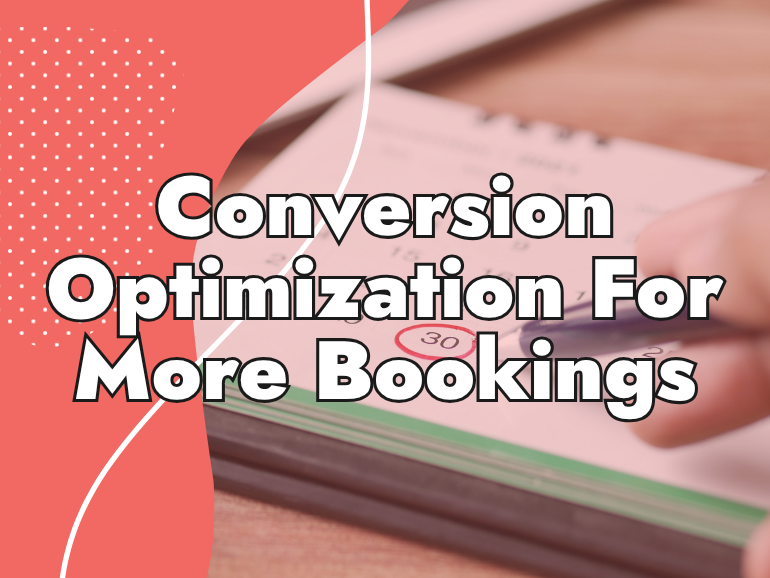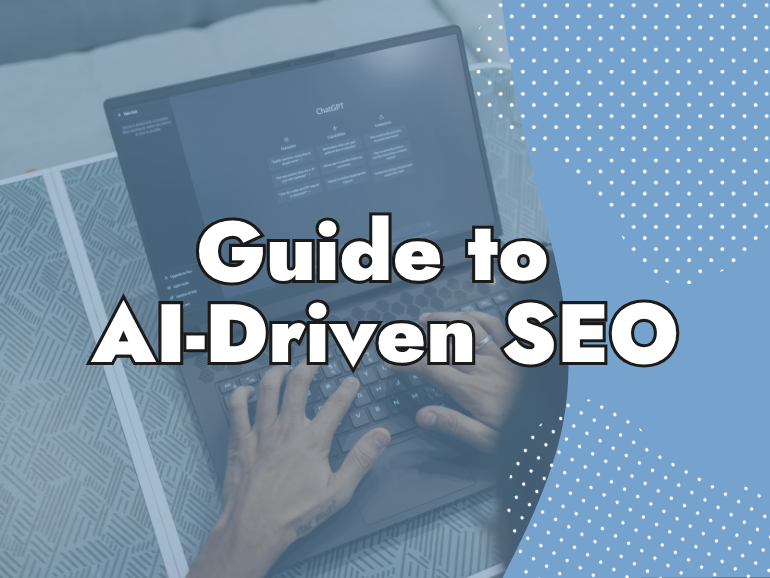Top 10 Ranking Problems that May Prevent Your Pages from Ranking
Struggling to climb the search rankings? Many websites face common SEO roadblocks that hold them back. This article highlights the top 10 ranking problems, from technical issues to content gaps, and offers insights on how to fix them and boost your visibility.
Written by Angela
Last updated November 17, 2025 • First published June 5, 2024
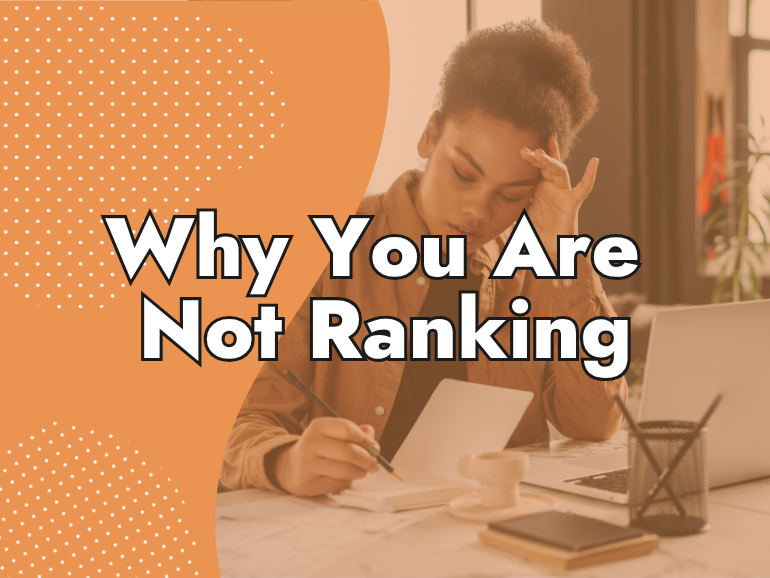
Ranking Issues & How to Fix Them
Is your website having ranking problems?
For many website owners, ranking problems equate to excessive declines that could be related to Google’s recent core algorithm updates.
From August 22, 2023, up to the latest Site Reputation Abuse Policy enforcement in May 2024, these updates have had profound consequences for website owners.
This new Abuse Policy targets websites that host low-quality, third-party content intended to manipulate search rankings. Your website may not fall into this category. However, between late 2023 and April 2024, Google’s core algorithm updates have primarily focused on the following.
- Enhancing the quality and relevance of search results.
- Targeting (and eliminating) low-quality content.
- Addressing issues related to AI-generated content.
Below are some of the major changes that are causing ranking problems for most websites. Most SEO experts believe low-quality content is playing a big part in this:
a) Quality Content Emphasis
Google’s updates have increasingly prioritized high-quality, human-generated content. This shift is aimed at reducing the prevalence of low-quality and AI-generated content in search results. Sites that rely heavily on low-value or AI-generated content have seen significant drops in their rankings over the last 6 months or more.
b) Spam and AI-Generated Content
The March 2024 Core Update, for instance, specifically targeted AI-generated spam. Google’s algorithms have become more adept at identifying and penalizing content that is primarily generated by AI without sufficient human oversight or value.
LIKE WHAT YOU’RE READING?
If these articles are helpful,
imagine what our team
can do for you!


More Traffic. Leads. Business.
I want to show you how SEO can grow your business in ways you haven’t seen before.
More Traffic. Leads. Growth.

I want to show you how SEO can grow your business in ways you haven’t seen before.
c) Continuous Refinements
Google’s updates are part of a continuous effort to refine its algorithms. They strive to better understand user intent and deliver the most relevant and useful search results. This includes ongoing adjustments to how Google evaluates content quality, relevance, and user engagement metrics.
d) Site Reputation Abuse
This occurs when third-party content is published primarily to benefit from the hosting site’s established reputation and ranking signals. The content may even be published without close oversight from the website owner.

Top 10 Most Important Ranking Problems You Should Address
Here are the top 10 issues websites have that could be preventing Google from ranking web pages in the top 10 of the SERPs.
- Poor Site Structure – Confusing, Disorganized, Difficult to Navigate
- Lack of Quality Content – Little or no well-written, informative content
- Slow Page Speed – Pages slow to load
- Not Mobile Friendly – Not optimized for mobile
- Technical Issues – Broken links, missing or misused tags and headers
- Lack of Backlinks – Too many low-quality and too few from reputable websites
- Keyword Optimization – Keyword use in Titles, Headings, Metadata, etc.
- Thin or Shallow Content – Content lacks depth
- Overuse of Ads – Intrusive ads that affect UX
- Security Issues – Unsecure web pages may be penalized
These are just a few potential issues that could affect your website’s ranking in search engine results. Conducting a thorough technical SEO audit can help identify specific areas for improvement that you need to address.
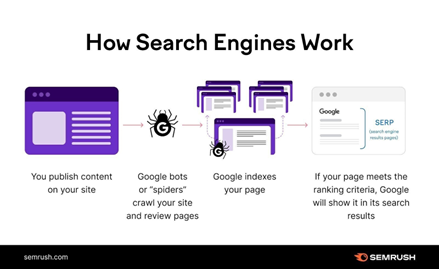
This diagram from search industry leaders simply shows how search engines like Google rank web pages.
Common Ranking Problems in More Detail
1. Poor Site Structure
Confusing Navigation – If your website lacks clear navigation menus or has a convoluted hierarchy, search engine crawlers may struggle to understand the relationship between pages.
Broken Internal Links – Broken internal links can hinder crawlers’ ability to navigate your site and index content effectively.
Inconsistent URL Structure – Inconsistent URL formats can cause ranking problems as well. They confuse search engines and make it harder for them to understand your website’s organization. Ask us about our SEO-friendly Website Design services.

2. Lack of Quality Content
Thin Content – Pages with minimal text or substance provide little value to users and may not be deemed relevant by search engines.
Duplicate Content – Content duplicated from other sources or within your website itself can cause ranking problems, as search engines prefer unique and original content.
Irrelevant Content – Content that doesn’t align with your website’s theme or target audience may not attract relevant traffic or satisfy user intent. Need help with SEO content writing?
Our friends at SEMrush show a great content example of how even though the sentence is slightly different, search engines still recognize it as duplicated content:
3. Slow Page Speed
Large File Sizes – Images, videos, and scripts that are not optimized can slow down page loading times. Server Issues, Unreliable Hosting, and poor Server Configurations can also lead to slow response times that negatively impact user experience and SEO.
Bloated Code – Excessive HTML, CSS, or JavaScript can increase page load times and hinder search engine crawling.
Watch the above Moz video to learn more about how page speed affects your website’s ranking,
including insights into how a web page is loaded and how to make it faster.
4. Mobile-Friendliness
Unresponsive Web Design – Websites that don’t adapt well to different screen sizes and devices may provide a poor user experience on mobile. This can lead to more ranking problems.
Touch Elements Issues – Buttons and links that are too small or closely spaced for easy tapping on mobile devices can frustrate users and affect rankings.
Mobile Content Discrepancy – Content discrepancies between desktop and mobile versions of your website can confuse search engines and lead to lower rankings for mobile searches.
Watch this short video to learn right from Google Search Central about best practices for mobile-first web design.
5. Technical Issues
Broken Links – Both internal and external broken links can harm user experience and hinder search engine crawling.
Missing Metadata – Meta tags, including title tags and meta descriptions, provide important information to search engines and influence click-through rates in search results.
Improper Use of Headers – The incorrect use of header tags (H1, H2, etc.) can confuse search engines about the structure and hierarchy of your website’s content.
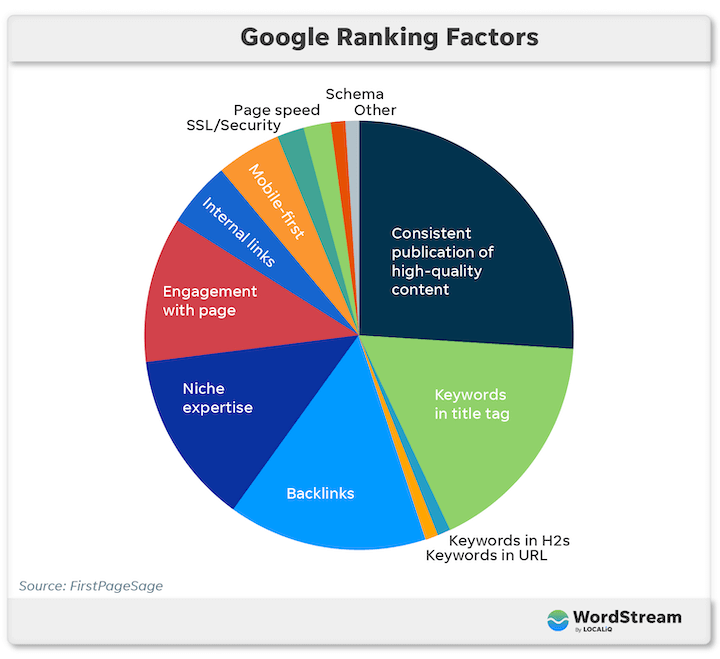
This pie chart highlights technical factors that affect Google search rankings,
such as proper use of keywords, page speed, SSL/security, mobile-first design, and the importance of links.
6. Lack of Backlinks
Low Quantity & Low Quality – Websites with few backlinks or backlinks from low-authority sites may also experience ranking problems. Your competitors may have stronger link profiles.
Unnatural Linking Patterns – Spammy or manipulative link-building tactics can result in penalties from search engines and harm rankings. Inquire about our Link Building services.
7. Keyword Optimization
Keyword Stuffing – Overusing keywords unnaturally within content or meta tags can signal spam to search engines and result in lower rankings.
Lack of Targeted Keywords – Failing to incorporate relevant keywords in titles, headings, and content can make it difficult for search engines to understand your website’s focus and relevance to search queries.
Google’s Spam Policies provide an example of what unnatural keyword use can look like. Read the below aloud: how many times do you count the phrase ‘app store credit’?

8. Thin Content
Lack of Depth – Pages that lack comprehensive information on a topic may not satisfy user intent and could be seen as less valuable by search engines.
Shallow Engagement – Content that doesn’t engage users or provide meaningful insights may lead to high bounce rates and continued ranking problems.
9. Overuse of Ads
Intrusive Interstitials – Pop-ups or interstitial ads that disrupt the user experience can lead to higher bounce rates and lower rankings.
Excessive Ad Density – Pages overloaded with ads may provide a poor user experience and detract from the main content, leading to lower search rankings.
You can see below how too many ads have slowed down this site’s page speed and still haven’t loaded the advertisements. As we know from above, slow page speed provides a poor UX, which can lead to a ranking problem:

Example of a cluttered webpage with excessive ads impacting page speed and user experience.
10. Security Issues
Lack of SSL Certificate – Websites without HTTPS encryption may be flagged as insecure by browsers and could be penalized in search rankings.
Malware or Hacking – Websites infected with malware or compromised by hackers may be deindexed or penalized by search engines. They do this to protect users from security risks. Contact us to learn more about our SSL Security services.

Online security issues can affect many files, plugins, programs, and more, which in turn can hurt your search engine ranking.
Regular updates help address bug fixes, protect against new threats, and ensure optimal performance.
How Well Does Your Website Address These Issues?
Your website may have other less important issues that could be contributing to ranking problems but not to the extent of the Top 10 listed above.
By addressing these major issues through a comprehensive SEO audit and implementing appropriate fixes, you can help improve your website’s visibility and rankings in search engine results.
Need Help with Your SEO?
1st on the List has been helping small to medium-sized businesses (SMEs) rank at the top of search engine results pages since 1997!
We know a thing or two about SEO and have been there through every Google algorithm update since Google’s inception.
If you are having ranking problems and need a technical audit or help with your SEO marketing, talk to our SEO experts.
Contact us online or call our toll-free number at 1-888-262-6687.
Angela
Angela Tucker has maintained the role of Lead Technical Optimizer at 1st on the List since our company was founded in 1997. She has experienced every one of Google’s algorithm updates and has the ability to review a website on a micro-level to pinpoint all the areas that could potentially be causing ranking issues. Her specific areas of expertise include Site Speed Optimization, Knowledge Graph, and Schema Markup.
Don’t miss out – get newest posts straight to your inbox!
OTHER ARTICLES WE THINK YOU’LL ENJOY
Partner With Us. Get More Leads.
Stop trying to do it all on your own – reach out to our team and we can discuss marketing strategies that are best suited for your business!
[NO HASSLE, NO PRESSURE, NO WORRIES – JUST MEANINGFUL INSIGHTS]




